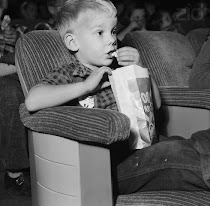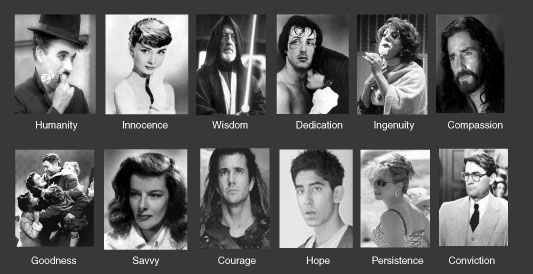
THE STATE OF (MY) ART

Are You a Dangerous Writer?
... because it observes, probes, dissects, challenges, and assaults life. At least it should. And, as we all know, life is dangerous. And since life and art are dangerous, and writers are intimately involved in both, they should be dangerous too.
Now, I understand there are different levels and definitions of "danger" but what I want to explore is danger's essence: that which is on the edge, which goes beyond the marked boundaries, which looks over the known into the scary and not-yet-discovered. That’s the nature of danger. And the nature of life, art, and artists.
Of course, every writer faces his own dilemmas, demons, and detractors that are specific to his own unique artistic journey, but all in all it's the same battle whether one is writing fact or fiction, for the few or for the masses. Listen to what these noted dangerous writers have to say:
"Surely all art is the result of one's having been in danger, of having gone through an experience all the way to the end, to where no one can go any further." - Rainer Maria Rilke
"I know that every good and excellent thing in the world stands moment by moment on the razor-edge of danger and must be fought for..." - Thornton Wilder
"Books... in which each thought is of unusual daring... which even make us dangerous to existing institutions - such call I good books." - Henry David Thoreau
What does a dangerous writer look like?
Dare to become a dangerous writer, not for danger’s sake, for that is foolishness and pride, but for the quest of knowing and living life to its deepest, highest, and widest. If you do, you may very well become like the artists of which Queen Victoria cautioned her daughter, the Crown Princess of Prussia, "I would venture to warn against too great intimacy with artists as it is very seductive and a little dangerous."
What a Screenplay Is ... and Isn't
What's an Action-Reaction-ometer?
That's why, as a part of my pitching material - it also helps in the rewriting process - I include what I call an Action/Reaction-ometer diagram. Here's how it works:
As the above illustration shows, I have plotted two series of horizontal line graphs detailing the events and corresponding emotions of act one of my script, "Gray Matters." The top line graphs show the predominant events/actions that occur in these most crucial first pages, with each given a relative high/low value.The bottom line graph show the corresponding emotion/reaction to those actions/events, also with a high/low relational value.
Let me be more specific: In the middle of the chart, an event with one of the highest value ratings is when the protagonist, Hugh, has a "confrontation with Kaufman," his key rival. That's seen on the top line graph. The corresponding reaction - shown on the bottom line graph - is "bold," because Hugh has finally found enough courage to confront his arch nemesis.
Shortly after that event, we see one of the lowest value readings when "Hugh escapes" - top line graph - and is correspondingly "desperate" - bottom line graph.
If you look at the overall first act of "Gray Matters," you'll see that there are progressive and extreme emotional swings that conclude with an extreme low and then extreme high value at the end of the act (leading into plot point one). Which is exactly my intention.
Below is the Action/Reaction-ometer chart for act two. Same thing. You can see the consistent emotional swings throughout the act, ending in an extreme low value at the end of the middle act (leading into the second plot point and act three).
Sure, it's a relative and subjective process, but the point is to visually show the emotional ups and downs of the character and story - which will most likely mirror what the audience is experiencing. It's also a good way to show the depth and breadth of character and story throughout your entire script.
Is it rocket science? No. Is it helpful? It has been for me. And as I start to promote "Gray Matters," I hope that producers and agents can literally see that I've not only created a well designed story but one that takes them on a fully developed, emotional, and satisfying roller coaster ride.
And one about which they will feel deeply.
Making a Scene - CITY LIGHTS
Making (of) a Scene
Where do you start analyzing this priceless gem (from City Lights, 1931)? It would take an eternity to
break down the mastery of this scene. Lasting only a few minutes. No words. A
million emotions. Brilliantly staged and emoted. Ending in a simple, satisfied
smile.
Setup: A down-and-out but hopeful tramp meets a beautiful, blind flower girl on
the streets, who mistakes him for a wealthy man. Having fallen in love with her
and learning she and her grandmother are being evicted from her home, he
undergoes a series of attempts to save her from her financial woes and restore
her sight with a fantastic, new cure.
All his former attempts failing miserably, he saves a drunken millionaire
attempting suicide, who rewards him handsomely. The tramp gives the money to
the girl but he is accused of robbing the now-sober millionaire, who doesn't
recognize him. He is thrown in jail and eventually set free.
0:00 - The tramp is back on the harsh, unforgiving streets.
0:16 - He is abused by street punks, the butt of their cruel mockery.
1:03 - The beautiful owner of a flower shop spots the tramp, amused.
1:10 - He is oblivious to her onlooking.
1:30 - He turns and NOTICES the beautiful owner from outside,
1:32 - slowly RECOGNIZES the blind girl he tried to save,
1:34 - is STUNNED at seeing her again,
1:36 - then ELATED, her sight obviously restored.
1:39 - She is TICKLED that the tramp has fallen for her,
1:40 - even remarking, "I've made a conquest!"
1:47 - He is GIDDY at the sight of her again, ADMIRING her,
1:49 - the flower in his hand unknowingly being de-petaled.
1:53 - She alerts him to his flower's demise,
1:58 - and mercifully offers him another from her shop.
2:01 - He ADORES her from the safely of outside.
2:09 - She offers a flower again and even some charity.
2:18 - As she get us to give them to him, he FEARFULLY flees.
2:21 - She catches him outside and offers him a flower again.
2:23 - He stops and FACES her, CAUTIOUS but drawn to her.
2:29 - She offers him the flower again and he SMILES.
2:36 - He slowly and HAPPILY takes the flower from her.
2:39 - She offers a coin, walks over to him, and gives it to him.
2:46 - As she grabs his hand and speaks to him,
2:4? - she slowly RECOGNIZES him by touch,
2:58 - touching his shoulder and knowing he is her benefactor.
3:01 - NERVOUSLY, finger in mouth, he watches her reaction.
3:06 - She grabs her face, asking, "You?"
3:10 - He slowly and SHYLY nods affirmatively, still NERVOUS.
3:17 - He inquires, "You can see now?"
3:25 - She confirms thankfully, deeply MOVED and in SHOCK.
3:38 - She takes his hand, putting it to her chest in deep GRATITUDE.
3:41 - He smiles back, beaming shyly, HAPPY for her.
Personal. Powerful. Redeeming. Wonderful. Genius.
What John Wesley Knew about Pitching
What does an 18th century theologian and itinerant preacher know about pitching a screenplay? For a man who travelled 250,000 miles, preached more than 400,000 sermons, and founded a movement that at his death included 135,000 faithful members and today numbers 30 million, I'd say quite a bit!
Now, I know screenplays aren't sermons (at least they shouldn't be) but whether you're winning over congregants to a cause or producers to a script, the fundamentals are the same: it's all about grabbing attention, keeping your audience engaged, and being unforgettable.
Here's how John Wesley did it:
He was INSPIRED.
When Wesley was five years old he was rescued from his father’s burning rectory. The dramatic incident left such a deep impression on him and he regarded himself as providentially set apart, “as a brand plucked from the burning.” He felt a special “calling” from that point on.
Thirty years later, as a struggling minister with next to no followers and often defeated and depressed, he heard a sermon in London that so touched his soul that it resulted in his penning the now famous lines, “I felt my heart strangely warmed.” After that experience he devoted his life to evangelism and the rest is history.
People can see passion. I’m guessing Wesley had it in spades. Do you? Be inspired and you'll be inspiring.
He was DEDICATED.
250,000 miles is quite a distance. On horseback. Along unpaved roads. And because he was so controversial, Wesley was forbidden by the Anglican Church to preach from its pulpits. So with few congregations welcoming him, he would ride out to a cottage or meeting hall or most likely an open field and simply begin to preach.
And even though Wesley and his followers were denounced as “promulgators of strange doctrines,” “fomenters of religious disturbances,” “blind fanatics who led people astray,” and “attackers of the clergy of the Church of England,” they continued their efforts with zeal, compassion, and effectiveness. Methodism itself has always been known for its strict adherence to a disciplined, committed, and rigorous life.
Wesley articulated his commitment this way, “Do all the good you can, by all the means you can, in all the ways you can, in all the places you can, at all the times you can, to all the people you can, as long as ever you can.”
That's dedication you don't see much of today, or ever. How dedicated are you? Commit unconditionally to your cause and people will see it and believe you.
He was FOCUSED.
Having attended Oxford, ordained into the Anglican Church, and being a fine scholar who spent 3 hours every afternoon studying the Bible, Wesley had a crystal clear idea of what his message was and how to communicate it. Anyone who preached 400,000 sermons definitely had something to say and said it effectively.
A brilliant organizer, Wesley set up Methodist societies across the country, building the brand of his new movement. He did this largely though the appointment of un-ordained itinerant preachers who, like him, traveled far and wide to spread their message. He also partnered with many other social justice causes like prison reform and abolition. Summing up the focus of his ministry, he simply said, “The world is my parish.”
There was no question in himself or in those who heard him what his mission was.
So, search deep within yourself for your motivation, dedicate yourself to the scope and intensity of your dedication, and focus your efforts in a practical and purposeful plan and you’ll not only set yourself but also your world on fire.
THE MENTAL EDGE
Aspirational ART-iculations
"Failure is unimportant. It takes courage to make a fool of yourself." Charlie Chaplin
"It's kind of fun to do the impossible." Walt Disney
"Necessity knows no law." St. Augustine
"Art is not a pasttime but a priesthood." Jean Cocteau
"Every time I get a script it's a matter of trying to know what I could do with it. I see colors, imagery. It has to have a smell. It's like falling in love." Paul Newman
"A designer knows he has achieved perfection not when there is nothing left to add, but when there is nothing left to take away." Antoine de Saint-Exupery
"There's nothing more exhilarating than being shot at and missed." Winston Churchill
"Art, like morality, consists in drawing the line somewhere." G. K. Chesterton
"If you knew how much work went into it, you wouldn't call it genius." Michelangelo
"A writer needs a pen. A painter needs a brush. A filmmaker needs an army." Orson Welles
"Art is a collaboration between God and the artist, and the less the artist does the better." Andre Gide



















